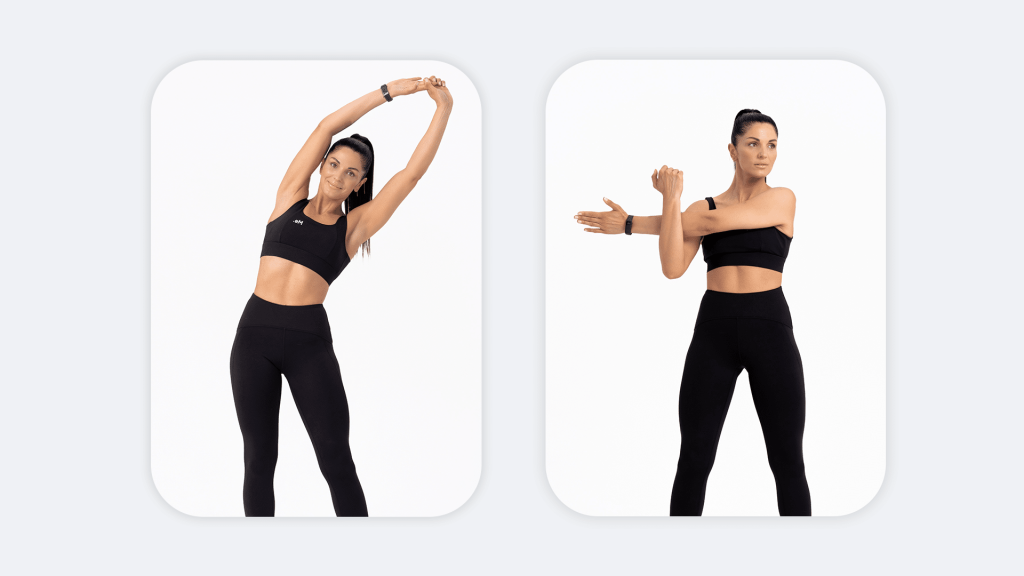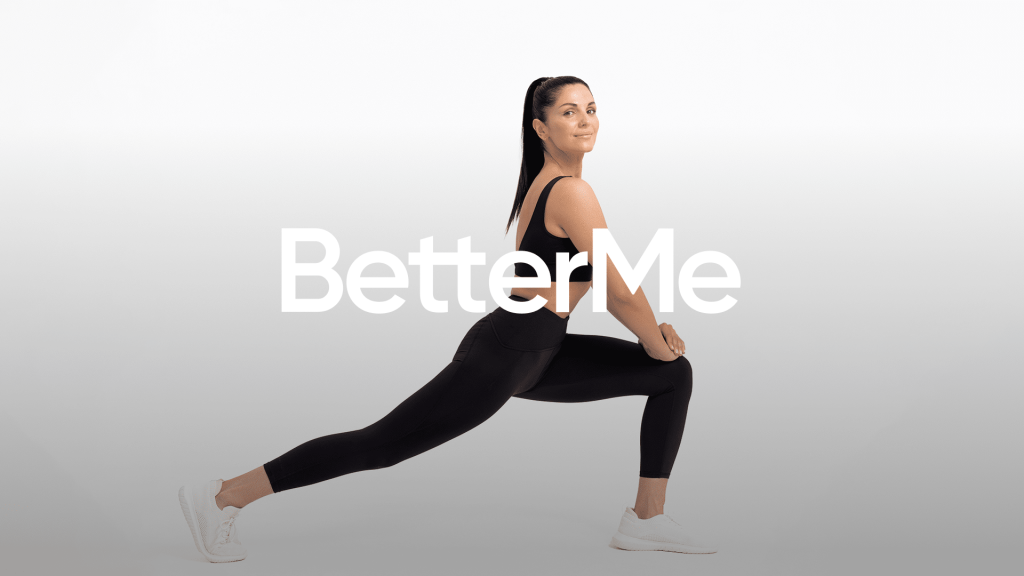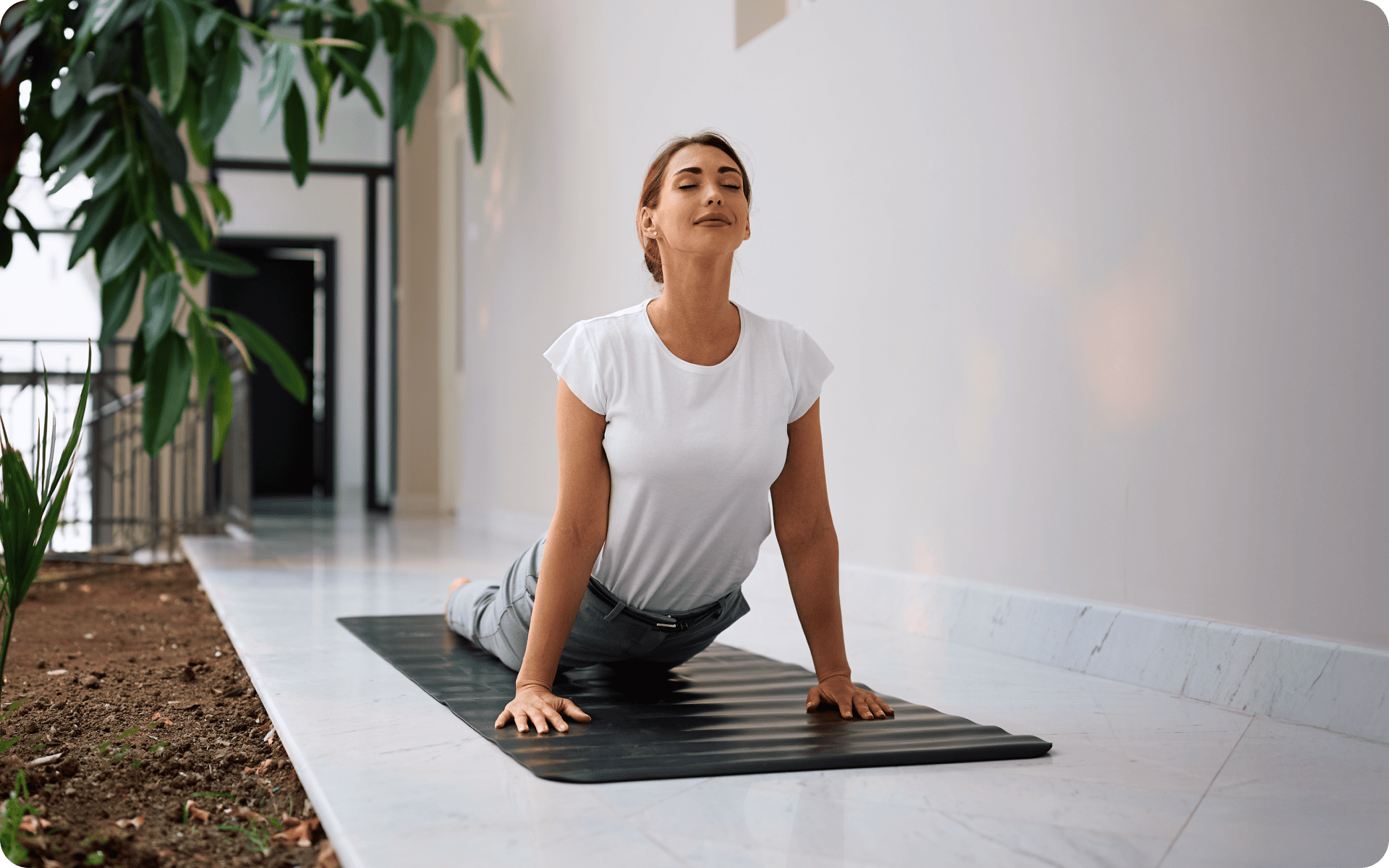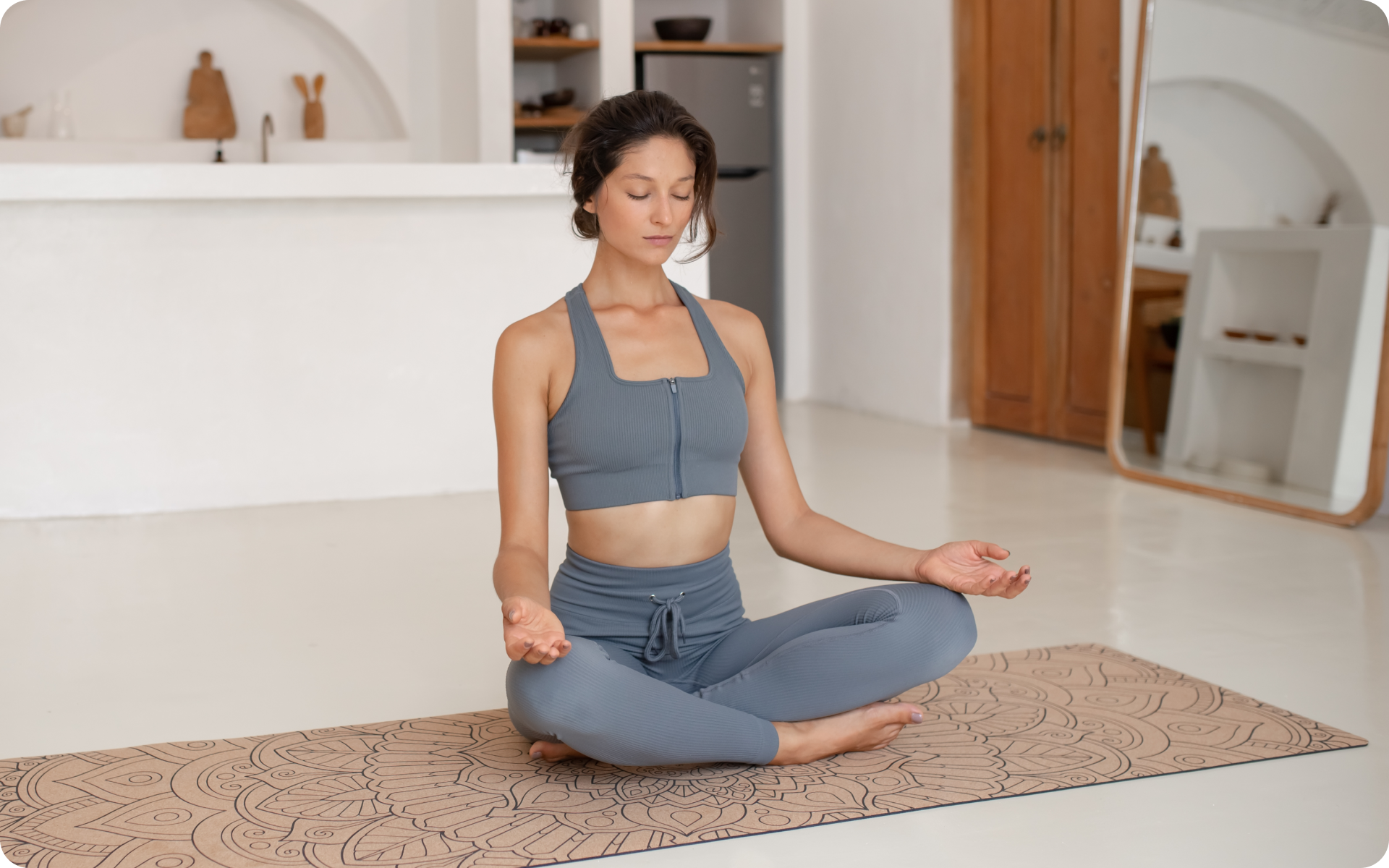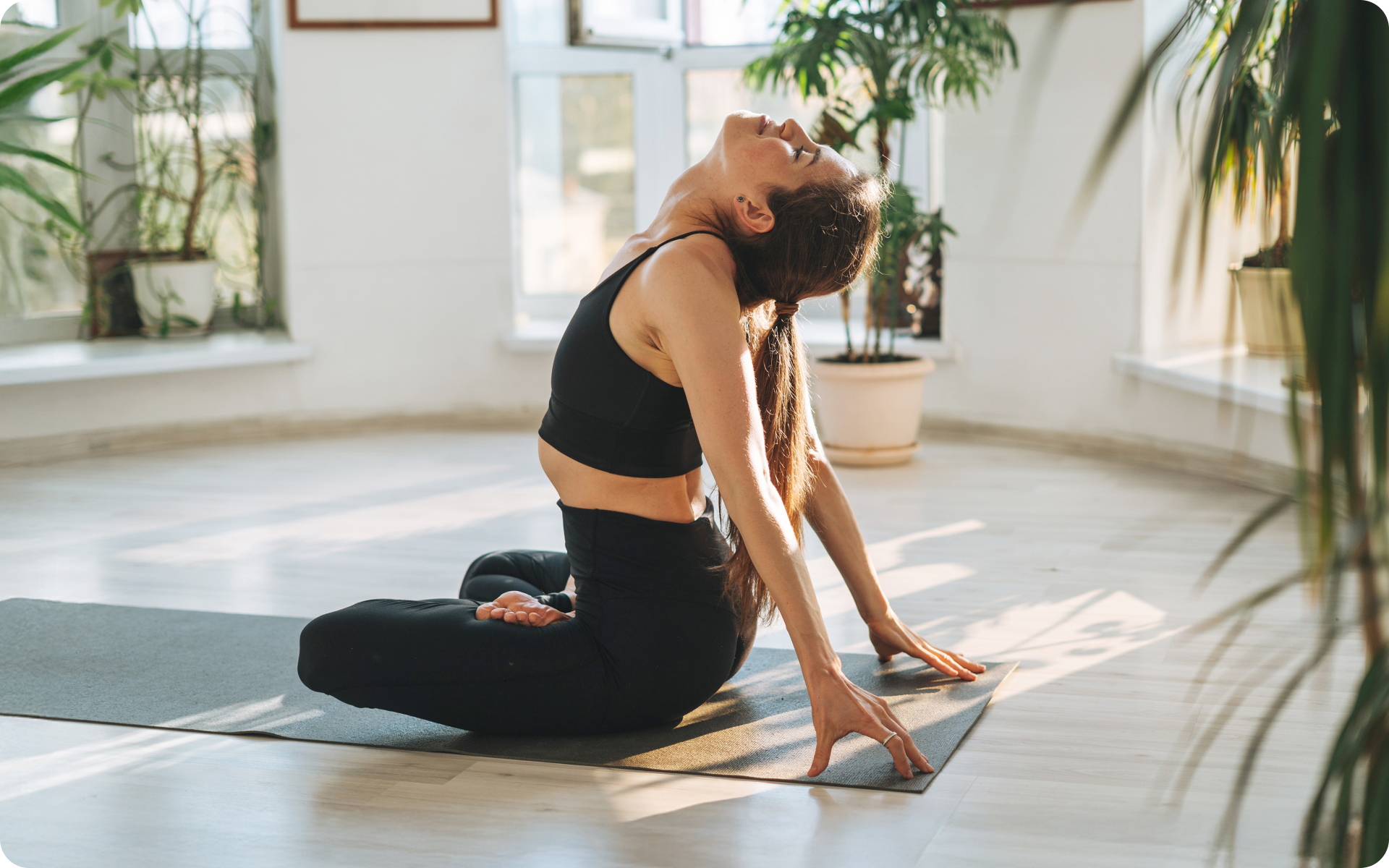Imagine that you are sitting at your laptop. Your back is arched, you take a sip of coffee, and you feel as if all your muscles are so tense that you just want to lie on your bed and do nothing.
You may be healing from past physical injury and suffer pain daily. Perhaps you are on your own all the time and there is no one who can help you with heavy bags of groceries while your children simultaneously jump on your back.
As human beings, we must constantly deal with many responsibilities that squeeze the energy from us.
Thankfully, there are relatively safe, affordable, and efficient ways of reducing the consequences of these responsibilities.
One of the top ways is somatic stretching, which is a combination of stretching and body awareness. There are many examples of somatic movement exercises that can alleviate pain, increase emotional awareness, and improve flexibility.
Read this article to learn more about somatic movement exercises, the different types, and the potential benefits of somatic stretching.
What are the 4 somatic movement practices?
Somatic movement exercises can increase flexibility and range of motion, but they are different from simple stretching, which entails moving and holding your body in a variety of positions to extend your muscles. There are many types of stretching exercises that aim to reduce body tension and increase mobility and flexibility.
However, somatic movement exercises focus on connecting through gentle relaxing movements and observing the feelings in your body.
When you perform somatic exercises, you must maintain focus on your inner sensations as you move.
BetterMe: Meditation & Sleep app can help you transmute stress into serenity, pull you up from the doldrums, free your mind from the cares and worries of the world, quell racing thoughts and infuse you with tranquility! Start using it now and change your life!
There are numerous somatic movement practices, and these are 4 practices that can be considered. Please note that these exercises would be practiced with the support or guidance of a trained/certified practitioner.
- Rolfing
- Yoga
- Alexander technique
- Walking Meditation.
Now we will examine each practice in more detail.
Rolfing
Rolfing, also known as Structural Integration, is a form of bodywork one of the most common somatic therapy exercises developed by Dr. Ida Rolf. It is a complementary therapy and falls outside of conventional medical practices to addressing physical and sometimes emotional issues through manual manipulation of the body’s fascia (connective tissue) and focused movement education.
The Rolfing process enables the body to regain the natural integrity of its form, by promoting postural efficiency and freedom of movement. Rolfing SI helps restore flexibility, reinvigorate your energy, and leave you feeling more comfortable in your body (5).
The idea behind Rolfing is that our bodies experience stress and discomfort when they are out of proportion or misaligned and it aims to relieve tension in muscles and can be used to treat medical conditions.
The main idea of rolfing is to keep the body in alignment to enable more balanced and easier movements. If your body is not in alignment, your movements will become unbalanced, which causes discomfort and pain (4).
Yoga
Yoga is a combination of physical postures, breathing techniques, and meditation. There are many exercises for beginners and advanced yoga enthusiasts, including somatic yoga, sofa yoga, hot yoga, and yin yoga.
Yoga can help improve general wellness through the relief of back and neck pain, mood management, and menopause symptom reduction (6).
Alexander technique
The Alexander technique teaches improved posture and movement. The Alexander Technique aligns with the principles of somatic education by focusing on sensory awareness, self-perception, and conscious movement. It can relieve back pain, sore shoulders, and neck aches.
The main principles of the technique are rooted in the ideas of mindfulness, understanding how the ways in which you move, sit, or stand affect your functioning, and that your body and mind work deeply together (1).
Meditation
Some forms of meditation, such as mindfulness-based stress reduction (MBSR) and Mindfulness-based therapy (MBT) integrate somatic principles to create a more holistic approach to improve overall mental wellbeing.
Mindfulness-based therapy has also been used effectively to treat a variety of physical and psychological disorders, including depression, anxiety, and chronic pain (3).
Meditation is a somatic practice as it cultivates awareness of bodily sensations, breath, and the present moment. People meditate for a variety of reasons. Some want to promote concentration, while others want to relax and alleviate stress or overcome their daily problems (2).
Read more: How To Use Somatic Breathing Exercises To Manage Stress.
What is somatic yoga?
Somatic yoga is a new term that is a combination of somatics (the awareness and understanding of the body’s sensations, movements, and experiences as a means to enhance overall well-being) and yoga.
Somatic yoga should be practiced with a certified somatic yoga instructor who has received specific training in somatic practices. Somatic yoga places a strong emphasis on internal sensations, proprioception, and the mind-body connection.
In somatic yoga, practitioners are encouraged to explore movements slowly and with intention, paying close attention to how each movement feels rather than striving for a specific end posture. This approach allows individuals to release tension, improve flexibility, and enhance body awareness.
Somatic Yoga Offers a Holistic Approach
It focuses on movement and well-being, encouraging practitioners to listen to their bodies and develop a greater understanding of their physical and emotional experiences.
Thomas Hanna developed somatic education during the 1970s.
Somatic movement focuses on internal body sensations, self-awareness, and mindful exploration of movement patterns. It involves tuning into the body’s sensations and engaging in slow, intentional movements to enhance bodily awareness, release tension, and promote a sense of well-being.
Yoga is typically focused on movements and how they affect your body.
However, somatic yoga is more profound as it allows you to get in touch with your internal senses and use movements that feel good for you. Rather than staying in a tough position, a simpler natural automatic pose is embraced while feelings in your muscles are observed.
A person builds relationships with their body and gradually defines what feels good and what feels painful. Somatic yoga generally uses smaller and slower movements, often with the eyes closed.
A somatic yoga sequence can consist of guided breathwork, meditation, body scans, periods of relaxation, a focus on tension release, and movement.
You do not exasperate yourself with complicated or fast-paced movements, but instead cultivate self-awareness and become more in tune with your body.
While performing somatic yoga, people may ask the following important questions:
- How am I feeling at this moment?
- How can I make this move more comfortable?
- Is it working for me?
Somatic yoga can help you deal with feelings of stress, but these results can be achieved by staying compassionate to yourself. If you demand too much of yourself, your mood can worsen, leading to you feeling more stressed.
Somatic yoga should be practiced with a certified somatic yoga instructor. It should be noted that using somatic yoga and other types of somatic stretching to relax and release tension should not be seen as central remedies for your mental, emotional, or physical health problems, and it is best to contact your healthcare provider for advice on how to improve your well-being.
What does somatic stretching release?
It is hardly surprising that everyday difficulties, external stressors, and internal battles impact the body. It can be difficult to concentrate on essential things, you may lack confidence during life challenges, and you may not see a sense of self-care and self-development.
The most beneficial remedy to this is consulting a specialist rather than experimenting with cheaper alternatives.
However, somatic stretching deserves to be on the list of central remedies as it boasts numerous benefits.
The reality is that your body will not be harmed by sitting or lying in a comfortable position as you breathe slowly and note the feelings of the body during the process.
Somatic stretching combines elements of somatic movement and stretching to promote relaxation, release tension, and enhance body awareness. It is a soothing activity that can release muscular tension through gentle movement and an awareness of how the muscles feel in different positions.
The nervous system wants to keep your muscles tight as a result of past distressing experiences, stress, injuries, repetitive daily actions, or athletic training, so somatic stretching teaches you how to realize that tension rather than ignoring it.
In addition, this may aid in emotional release.
With stress being a constant presence in our lives, taking time to process emotions, decompress and get into the right frame of mind is absolutely crucial. With BetterMe: Meditation & Sleep app your mental health is in good hands! Start using it now!
What are examples of somatic exercises?
A major benefit of somatic stretching is its convenience. There is no need for any kind of membership in the “somatic club” and you can complete all the exercises on your own at home. In addition, there is no need to buy special clothing or shoes for somatic exercise. All that is needed is motivation, 5-10 minutes of free time, enough room to move, and comfortable clothing.
The top 5 simple somatic stretches you can practice on any day at any time are:
- Hang your head
- Standing awareness
- Turning over
- Cross-connections
- Hip flexors exercise
Hang your head
This is one of the easiest and most efficient somatic exercises for the neck and shoulders:
- Stand up straight with your feet on the floor and slowly hang your head, allowing it to fall down comfortably.
- Notice how the muscles in your neck feel and how the neck movement impacts nearby muscles, joints, and tissues.
- Identify an area where you can feel tension (for example, the back of the neck) and explore how it feels.
- Notice how it feels to go into the stretch while releasing some of the tension you feel.
5 minutes is sufficient for this type of stretching.
Standing awareness
If you are new to somatic stretching, it may be better to start with this technique as it helps you gradually settle into the stretch without any movement at all:
- Stand up straight with your feet on the floor and feel the way your feet grip the floor.
- Try to release the foot muscles.
- Take a few deep breaths and notice the way your abdominal muscles expand and contract.
- Acknowledge the awareness of these feelings.
- Scan your body from top to bottom and notice how the different muscles feel, focusing in particular on any areas of tension.
Turning over
This somatic training stretches the entire body and is beneficial for unlocking stiff backs and shoulders:
- Lie on your back in a starfish position in as relaxed a manner as possible. Move your right fingertips across your chest toward your left shoulder.
- Continue pulling with your fingers to reach toward your left hand and slowly roll over to your left side.
- After the movement is completed, rest for a couple of breaths and roll back to the starting position.
- While returning to your center, allow your arms and head to roll as passively as possible.
- Repeat on the other side, 4 times each side in total.
- Ensure your head is always on the floor, so you receive a relaxing massage and completely let go of the muscular tension in your neck.
Cross-connections
You can find gentle core support with the cross-connection somatic experience. This practice can be performed on the floor:
- Lie on your back in a big starfish position. Feel the connection between your right arm and left leg and your left arm and right leg.
- Gently press your left arm and right leg on the floor, allowing your right arm and left leg to lengthen and float lightly an inch off the floor.
- Repeat the same movement on the other side, slowly sensing the 2 diagonal lines.
- Repeat 5-10 times on each side and relax, noticing how you feel upon returning to stillness.
Hip flexors exercise
Somatic exercises for hip flexors may make you aware of your pelvis and groin, and the difference you feel between right and left:
- Lie flat on the floor and bend your knees.
- Place one or both hands on the front of the left thigh. Arch your back away from the floor and try to lift the knee to the head, resisting using your hands.
- Hold this for 3-5 seconds before slowly releasing the tension. The slow release should take between 6-10 seconds.
- Take a breath, then repeat the contract/release twice more.
- After the third time, allow the legs to lengthen out across the mat and see if you can feel any difference in the feet, hips, and legs.
- Repeat the practice on the right leg three times and then rescan.
How often should you do somatic exercises?
Are you ready to start somatic stretching? You can practice somatic exercises independently for 5-10 minutes each day as this is sufficient for a beginner.
It is up to you to choose the perfect timing, as only you know what you hope to get out of the stretching session.
Morning somatic practice can help your muscles wake up faster and help you get ready for the rest of the day.
Stretching in the evening is essential for shaking all the stress off your body and it can restore the muscles to a much more relaxed condition before you sleep.
If you have a sedentary job, why not take a 5-minute break and enjoy the soothing experience of a somatic session? This can relieve tension in your muscles and you will return to work feeling more relaxed and restored.
Read more: 11 Somatic Grounding Exercises For When You Need To Manage Your Triggers.
What are the risks of somatic stretching?
Somatic stretching is relatively safe as long as you do not push yourself to perform any kind of movement. It only involves comfortable relaxing poses that require no tension. However, if you’ve had a physical injury or recently undergone surgery, or if pregnant you need to consult a professional before attempting these exercises.
Therefore, it is better to contact a mental health counselor or personal healthcare provider as a means of reducing the effects of past traumas.
With the right professional, you will realize the way in which past experience impacts your mental and physical health. In addition, they will provide support to you if you feel overwhelmed during the process.
FAQs
Is yoga a somatic therapy?
Somatic yoga offers a holistic approach to movement and well-being, where practitioners explore movements slowly and with intention, paying close attention to how each movement feels rather than striving for a specific end posture. This approach allows individuals to improve flexibility, release tension, and enhance body awareness.
Why does stretching release emotions?
Generally, mind-body practices, such as yoga, stretching, or massages, aid in releasing emotions due to the interconnected nature of the body and mind. These practices activate the central nervous system and release physical tension stored in muscles and connective tissues. As tension is released, it can also trigger the release of emotional tension that may have been held in the body which can result in the individual crying. In addition, people often keep their feelings to themselves, and this can make their bodies stiffer. Stretching teaches you to release the tension from the muscles, provoking certain emotional reactions.
Is meditation a somatic exercise?
Some forms of meditation, such as mindfulness-based stress reduction (MBSR) and Mindfulness-based therapy (MBT) integrate somatic principles to create a more holistic approach to improve overall mental wellbeing.
The Bottom Line
Many life stressors have an impact on mental, emotional, and physical well-being. There are many effective ways to either reduce the symptoms or eliminate this problem.
Somatic stretching is a type of practice that involves relaxing movements and body awareness. During somatic exercises, you observe how your body feels when each movement is performed. There are four main practices of movement somatics: yoga, walking meditation, rolfing, and the Alexander technique.
Somatic yoga Somatic yoga combines mindful movement, breath awareness, and body-focused practices to enhance body-mind connection, release tension, and promote emotional well-being through a holistic approach to yoga.
Somatic exercise may help you release your body tension and release unresolved emotions linked to past traumatic events. Somatic stretching can be practiced every day for 5 to 10 minutes.
It should be noted that somatic sessions must not be regarded as the leading remedy for dealing with difficult emotions and feelings linked to experiencing a traumatic event or as a result of stress. It is recommended that you consult a professional therapist for advice on your healing journey.
DISCLAIMER:
This article is intended for general informational purposes only and does not serve to address individual circumstances. It is not a substitute for professional advice or help and should not be relied on for making any kind of decision-making. Any action taken as a direct or indirect result of the information in this article is entirely at your own risk and is your sole responsibility.
BetterMe, its content staff, and its medical advisors accept no responsibility for inaccuracies, errors, misstatements, inconsistencies, or omissions and specifically disclaim any liability, loss or risk, personal, professional or otherwise, which may be incurred as a consequence, directly or indirectly, of the use and/or application of any content.
You should always seek the advice of your physician or other qualified health provider with any questions you may have regarding a medical condition or your specific situation. Never disregard professional medical advice or delay seeking it because of BetterMe content. If you suspect or think you may have a medical emergency, call your doctor.
SOURCES:
- Alexander technique (2021, nhs.uk)
- Meditation (2022, clevelandclinic.org)
- Mindfulness-Based Therapies in the Treatment of Somatization Disorders: A Systematic Review and Meta-Analysis (2013, ncbi.nlm.nih.gov).
- Rolfing therapy: Technique, benefits, and more (2022, medicalnewstoday.com)
- What is Rolfing Structural Integration? (2023, rolf.org)
- Yoga: What You Need To Know (2021, nccih.nih.gov)



